
Delightful December to you!
December 9: The AO/NAO really drop today. This is significant enough to have more confidence that the models are not cold enough yet. Typically, what we see in a solidly -AO/-NAO pattern is that models continue to get colder and colder(more HDD's) with each update as they get a better handle of the pattern which is predicted by the -AO-NAO. This is exactly whats happened the last couple of days.
December 6 update: Most models keep the frigid air locked up in Canada, which means very mild in the US. AO/NAO has an extremely wide range in solutions. As long as some hang on to the solidly negative AO/NAO(minority) there is still a chance(waning) that it could turn sharply colder. The Canadian model has turned milder, towards the the very mild GFS.
December 5 update:
AO and NAO dropped a bit more but the spread and disparity in model solutions is massive
and the difference that it will make to temperatures later in December is stratospheric.
Canadian model is potentially very cold(with its cold bias). European model is shifting in that direction. The GFS disagrees strongly and is very mild.
I'll update the products below this weekend.
+++++++++++++++++++++++++++++++++++++++
December 4 update: AO/NAO are dropping lower today, staying below 0 and reintroducing more risk of the frigid air in Canada getting transported south(that was taken out on Thursday when the AO/NAO shifted higher), although most 2 week solutions are not showing that.............yet. Great uncertainty!
Cross polar flow in week 2 will fill Canada up with FRIGID air. Fairly zonal flow in the US on models keeps most of it locked up to our north............for now. This mild December outlook has crushed NG prices the last 2 days.
Very poor agreement on some features in week 2 makes the forecast uncertain and small shifts with a huge temperature gradient will count for big temperature changes for some places.
Reasons to keep being thankful here in 2020!
https://www.marketforum.com/forum/topic/45623/
NEW: Detailed analysis. Latest COVID-19 numbers. Hospitals are near capacity in many places.
https://www.marketforum.com/forum/topic/61206/
Scroll down and enjoy the latest comprehensive weather to the max...... occurring because of the natural physical laws in our atmosphere as life on this greening planet continues to enjoy the best weather/climate in at least 1,000 years(the last time that it was this warm) with the added bonus of extra beneficial CO2.
Most maps below will automatically update each day(not the snow map).
Total Snowfall the next 2 weeks. Not much for December(except for New England)!
Go to the link below, then hit the location/county on the map for details.
https://www.spc.noaa.gov/ Go to "hazards"
Here are the latest hazards across the country.
 |
Purple/Pink/blue on land is cold/Winter weather. Brown is wind, Green is flooding. Gray is fog. Reddish is a red flag advisory.
Go to the link below, then hit the location/county on the map for details.
https://www.spc.noaa.gov/ Go to "hazards"
https://www.mesonet.org/index.php/weather/map/us_air_temperature/air_temperature

https://www.mesonet.org/index.php/weather/map/wind_chill_heat_index1/air_temperature

Current Weather Map
| NCEP Days 0-7 Forecast Loop | NCEP Short-Range Model Discussion | NCEP Day 3-7 Discussion |


Current Jet Stream

| Low Temperatures Tomorrow Morning |

Highs today and tomorrow.



Highs for days 3-7:
A bit chilly..............but it's December!
Warming up next week though!
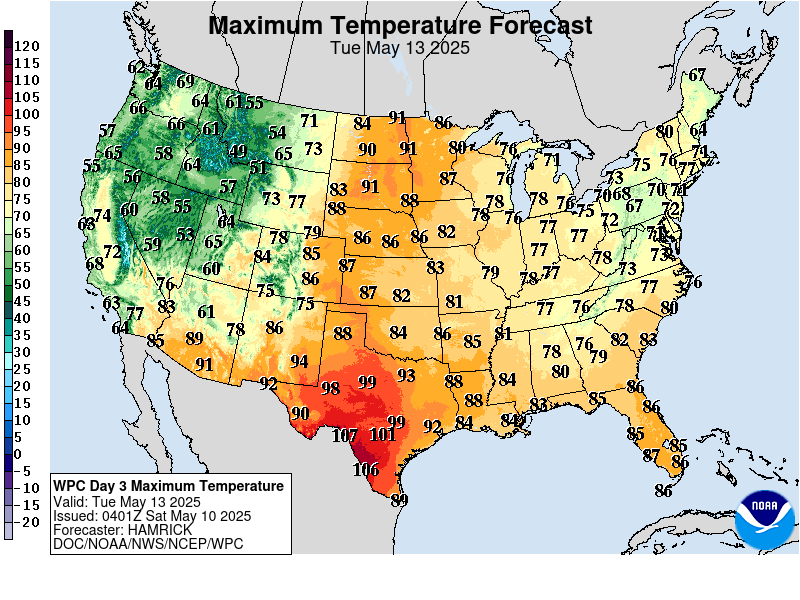
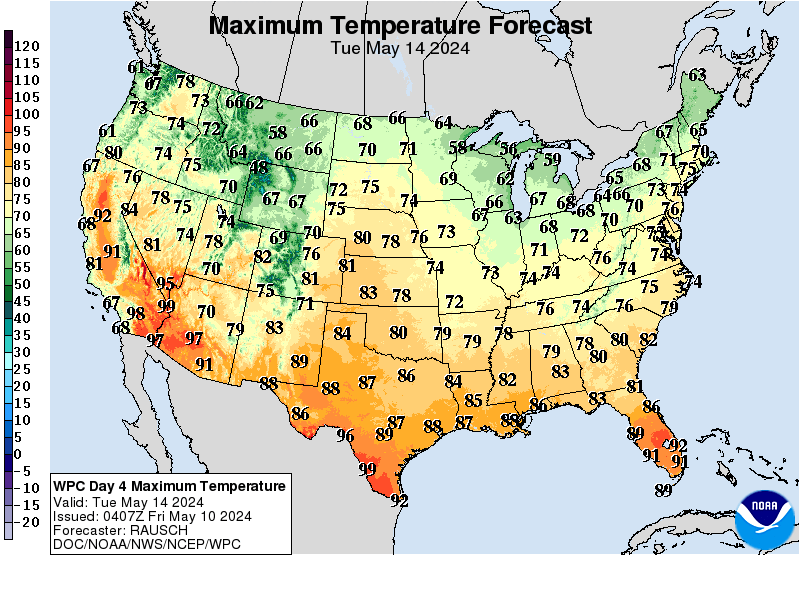
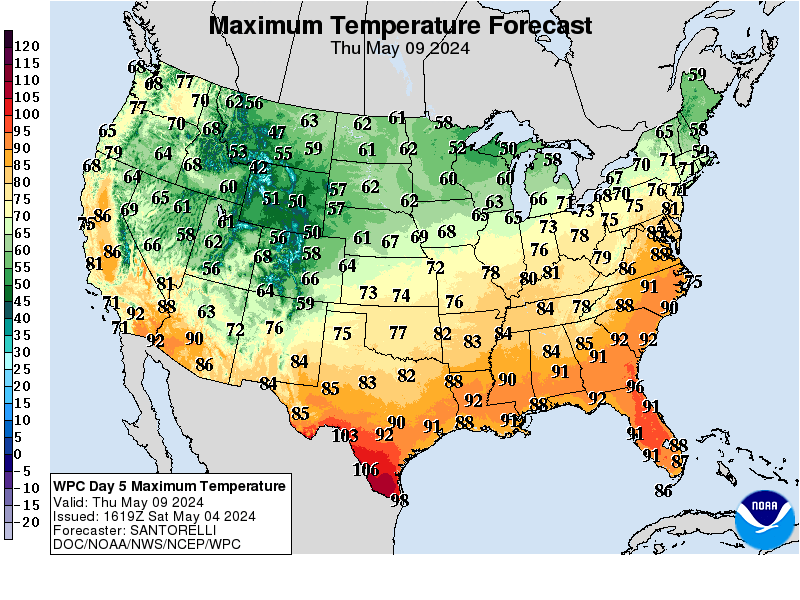
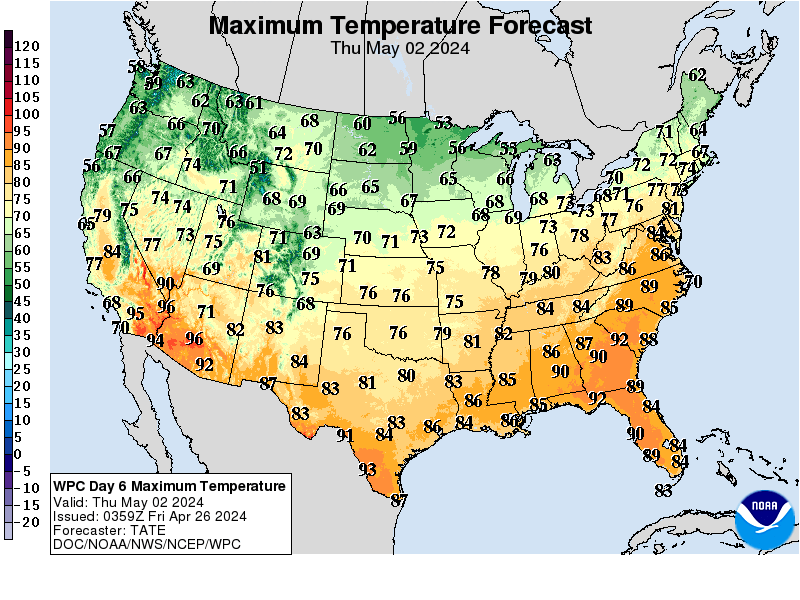
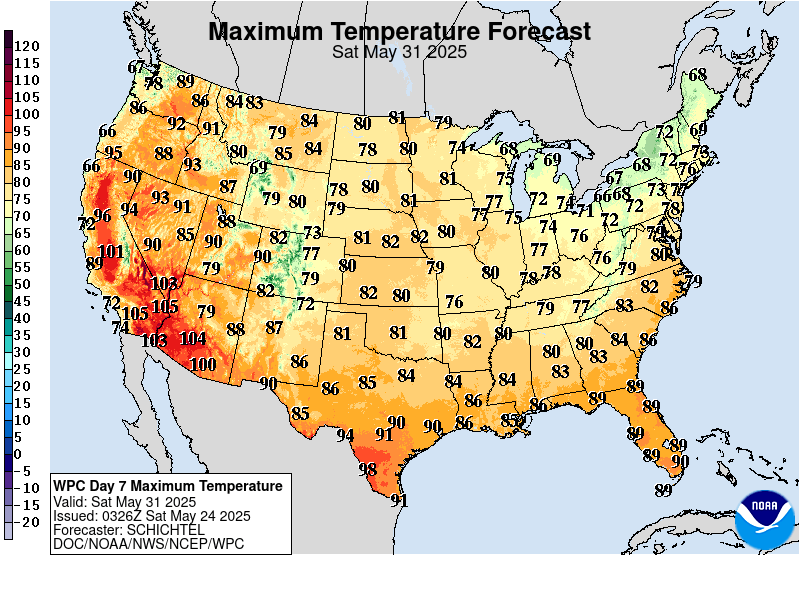
Lows days 3-7 below:
Freeze line fairly far south but not unusual for this time of year!
Warming up next week.
https://www.wpc.ncep.noaa.gov/medr/medr_min.shtml
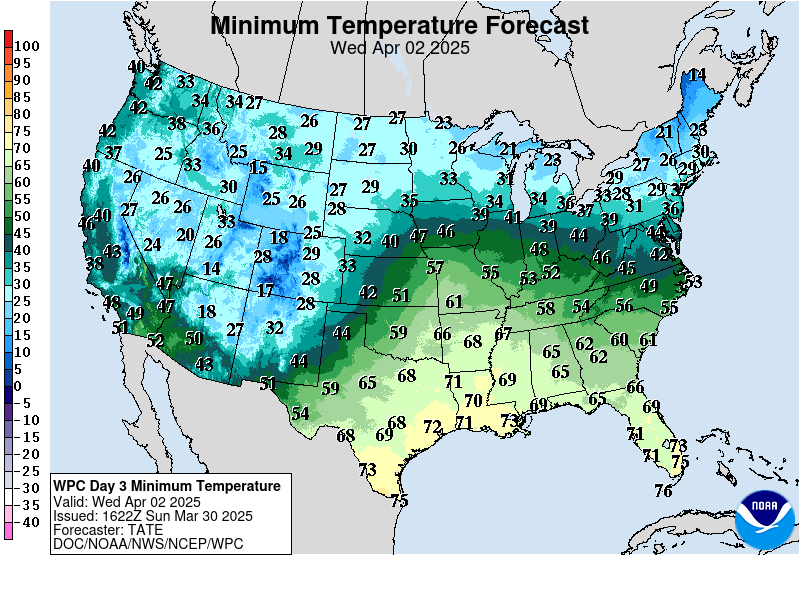
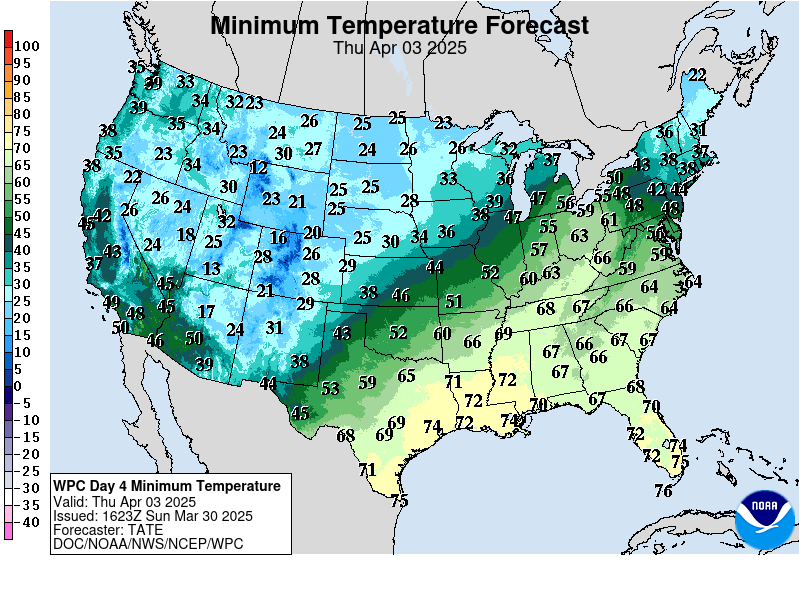
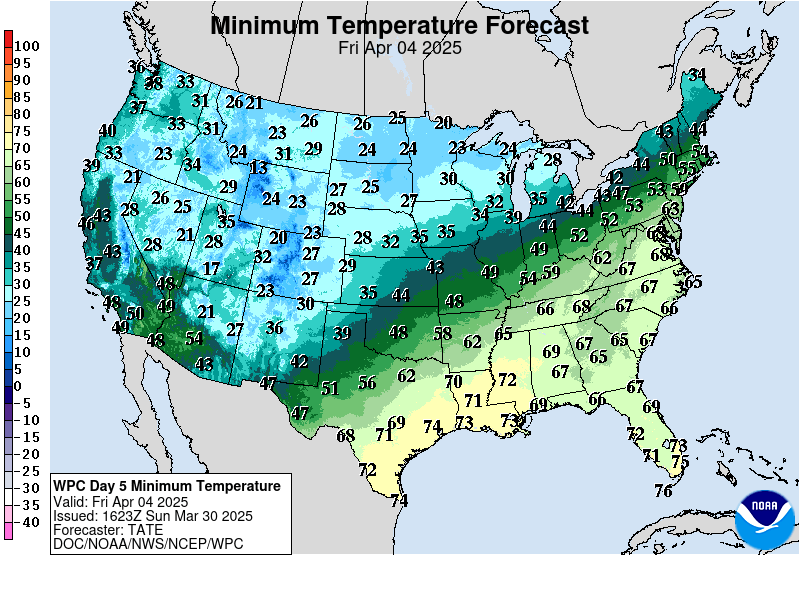
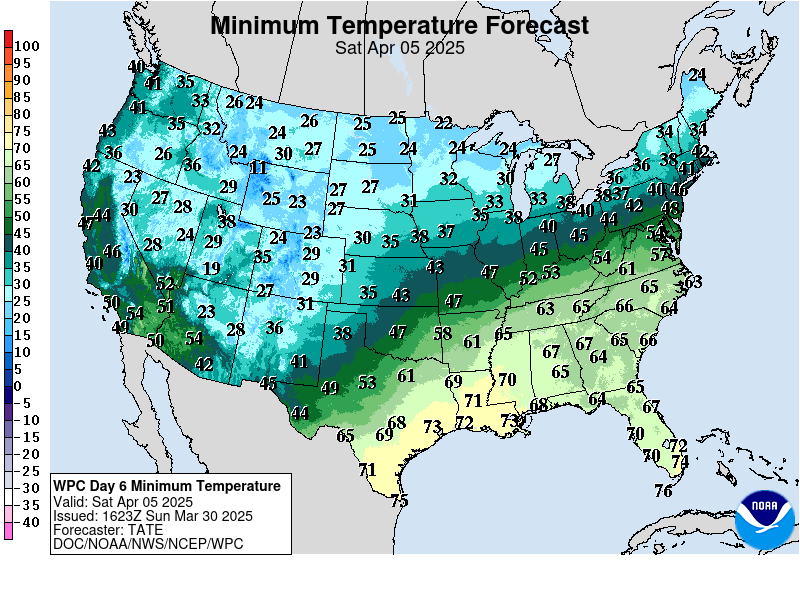
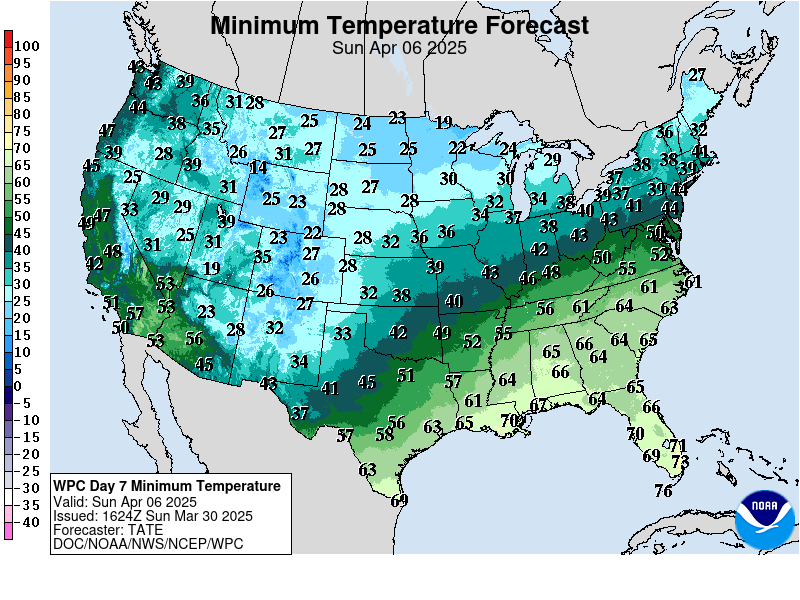
Temperatures compared to Average for days 3-7
Above average N.Plains. Chilly in the Deep South vs average.
https://www.wpc.ncep.noaa.gov/medr/medr_mean.shtml
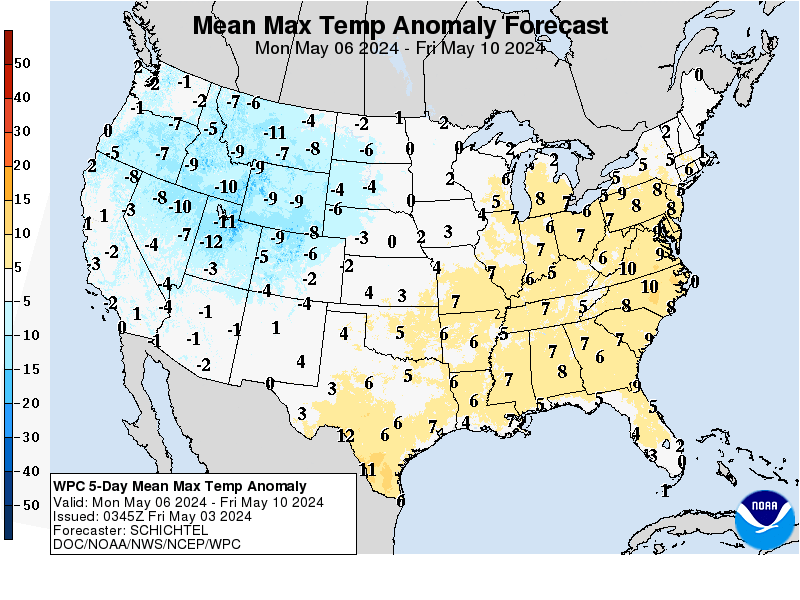
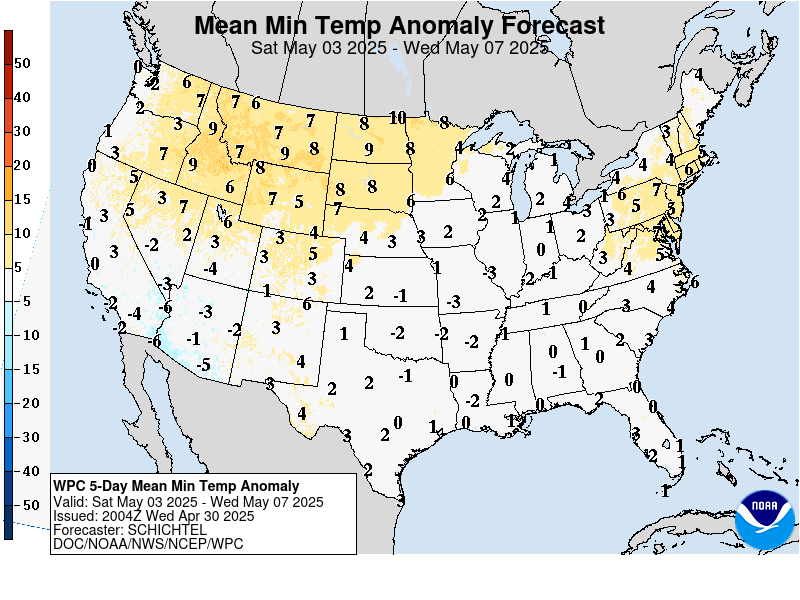
Surface Weather features days 0-1-2 then days 3-7:
Pretty quiet. No major snow.
https://www.cpc.ncep.noaa.gov/products/forecasts/
Days 0-1-2 below:
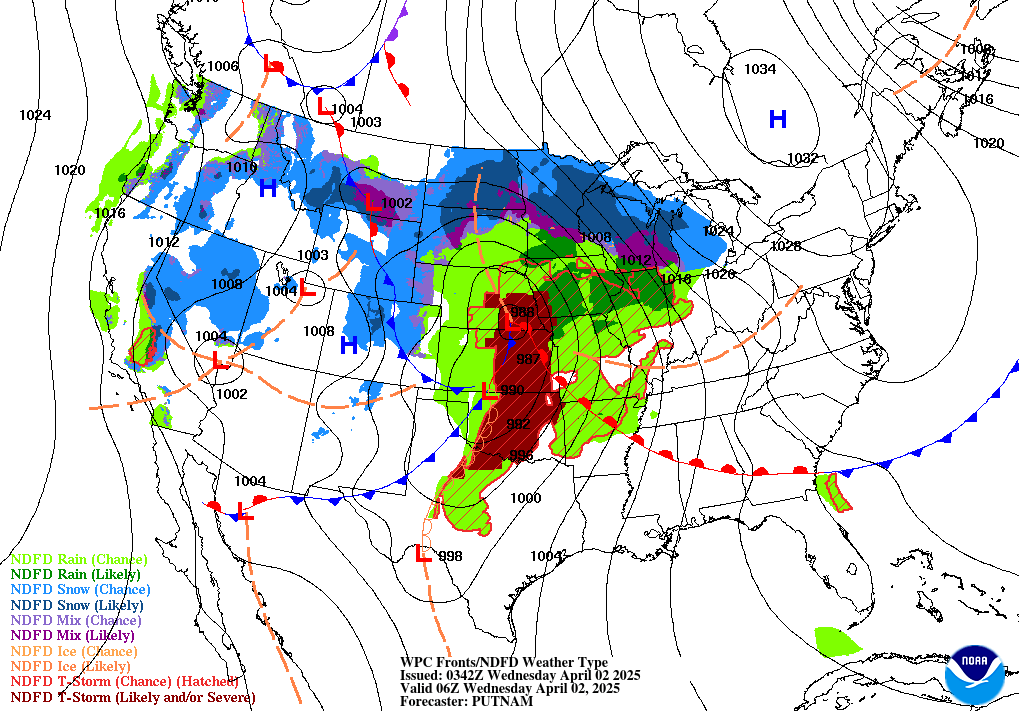
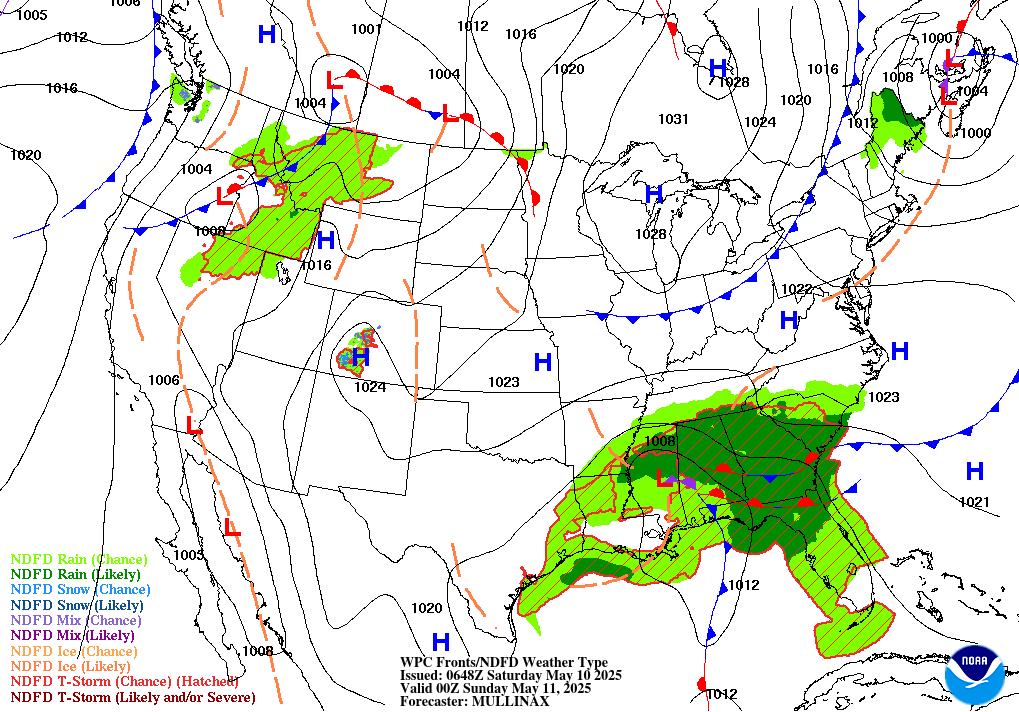
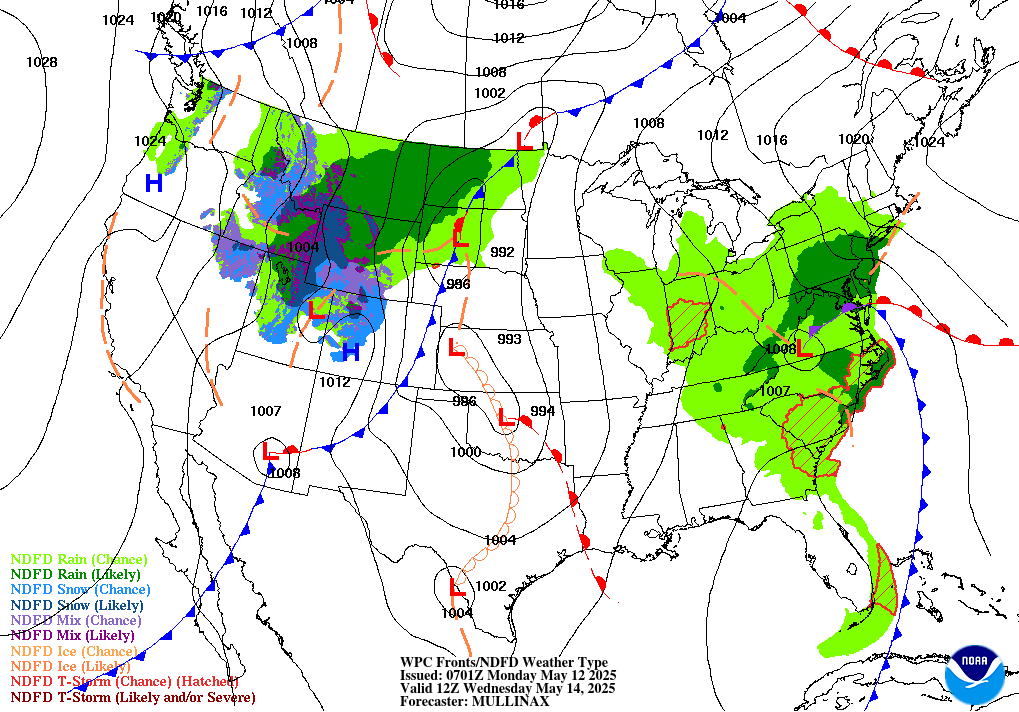
Days 3-7 below: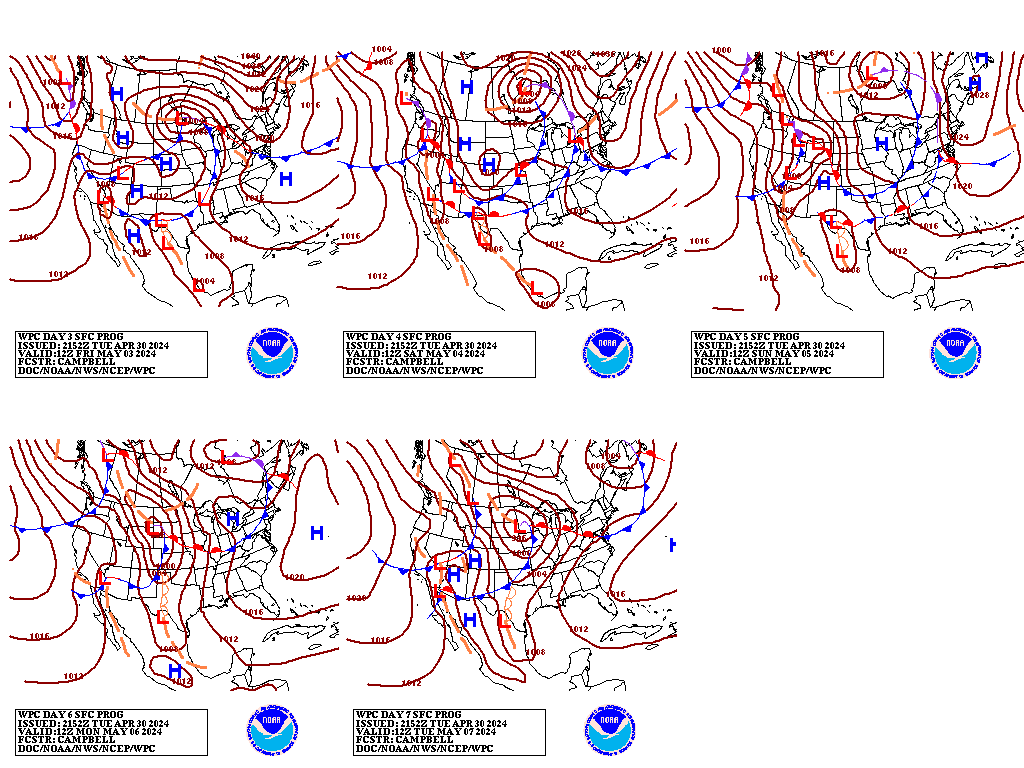
Total Snowfall the next 2 weeks. Not much for December(except for New England)!
Liquid equivalent precip forecasts for the next 7 days are below.
Mostly Dry!
Day 1 below
http://www.wpc.ncep.noaa.gov/qpf/fill_94qwbg.gif?1526306199054
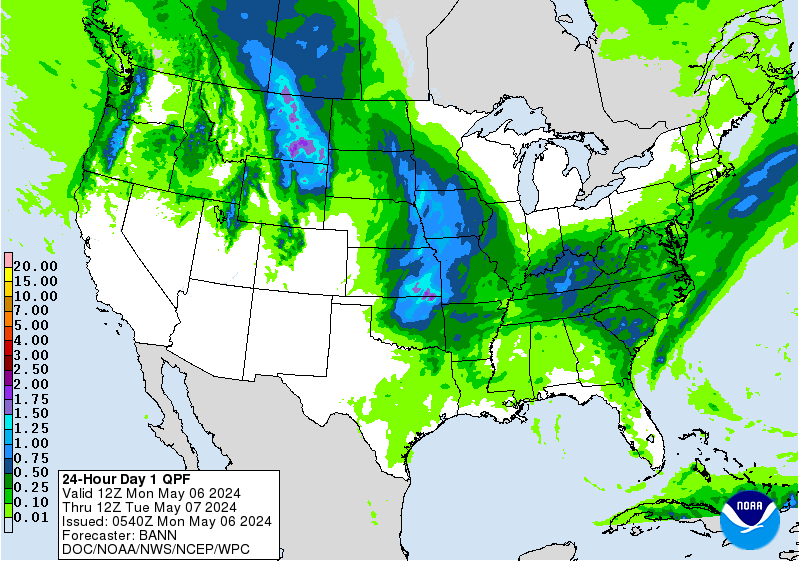
Day 2 below:
http://www.wpc.ncep.noaa.gov/qpf/fill_98qwbg.gif?1528293750112
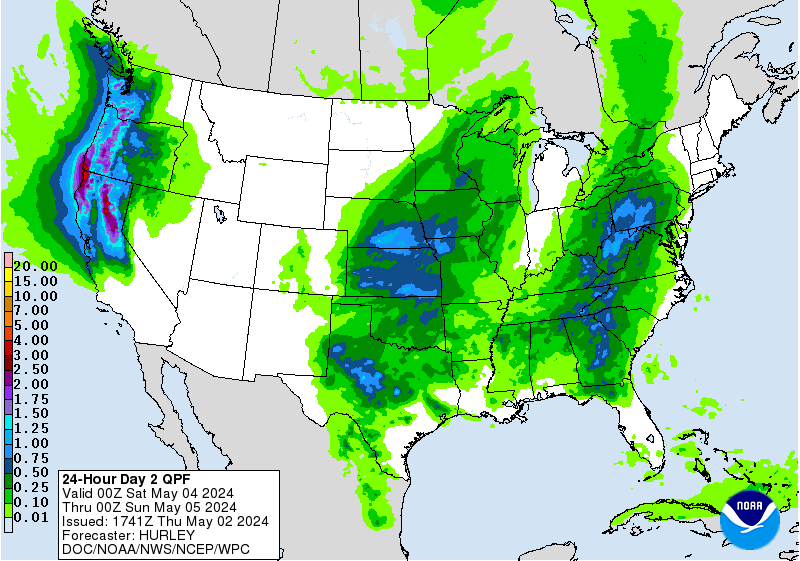
Day 3 below
http://www.wpc.ncep.noaa.gov/qpf/fill_99qwbg.gif?1528293842764
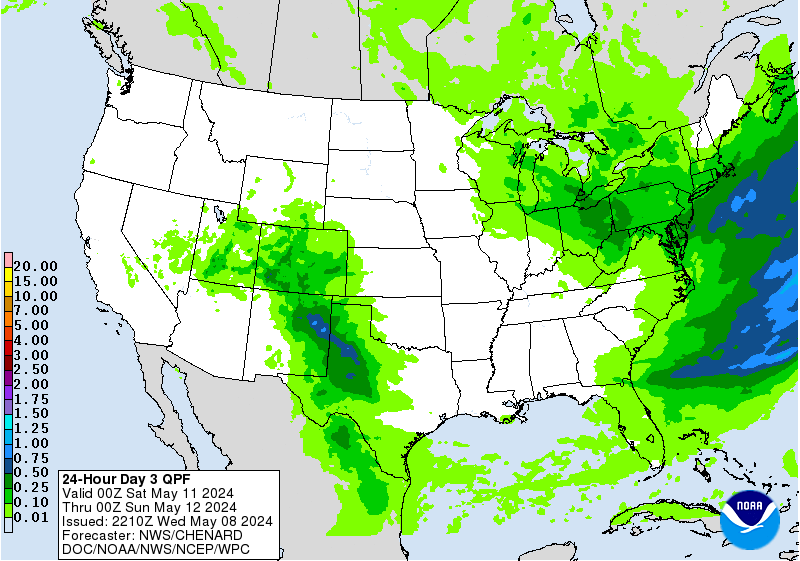
Days 4-5 below:
http://www.wpc.ncep.noaa.gov/qpf/95ep48iwbg_fill.gif?1526306162
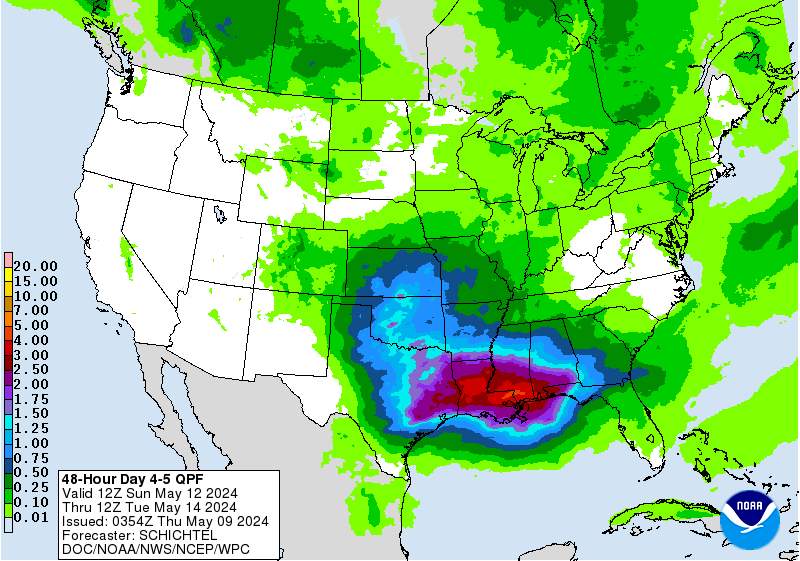
Days 6-7 below:
http://www.wpc.ncep.noaa.gov/qpf/97ep48iwbg_fill.gif?1526306162
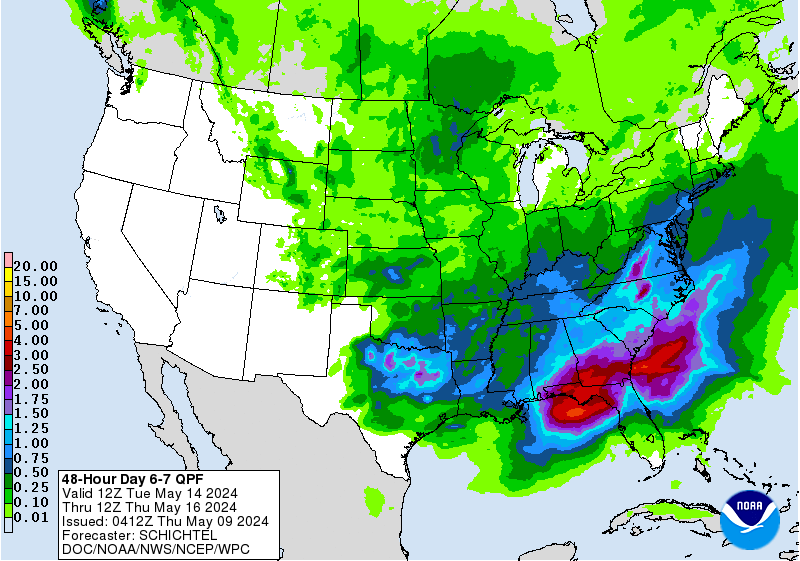
7 Day Total precipitation below:
https://www.wpc.ncep.noaa.gov/qpf/p168i.gif?1566925971
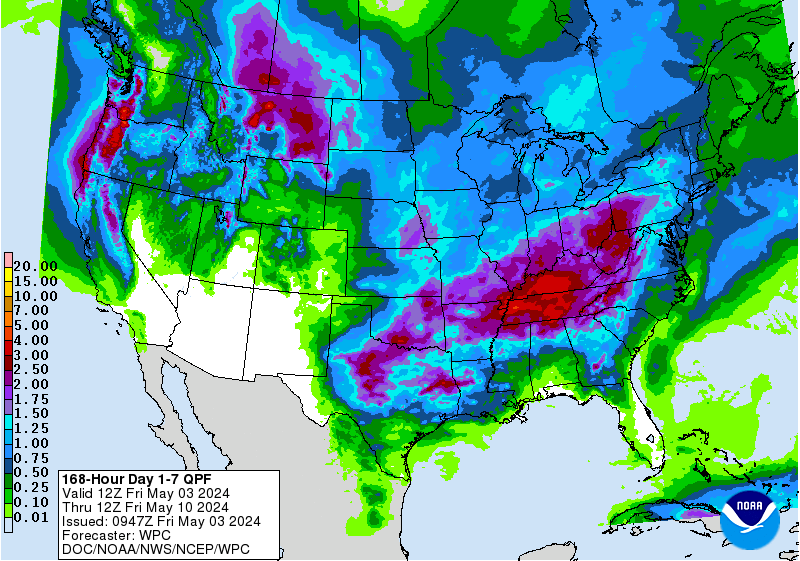
Excessive rain potential.
None
Mesoscale Precipitation Discussions
Current Day 1 Forecast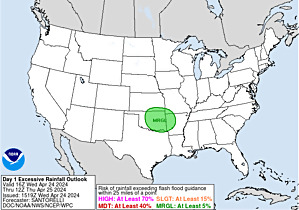 |
Day 1 Threat Area in Text Format
| Day 2 and Day 3 Forecasts |
Current Day 2 Forecast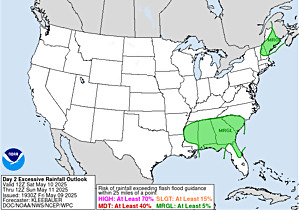 |
Day 2 Threat Area in Text Format
Current Day 3 Forecast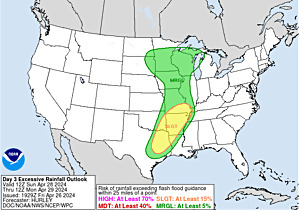 |
Current Dew Points
Dry air in place. Gulf of Mexico closed for water vapor transport business to the north.

Latest radar loops
http://www.nws.noaa.gov/radar_tab.php


| (3400x1700 pixels - 2.2mb) Go to: Most Recent Image |

Go to: Most Recent Image
You can go to this link to see precipitation totals from recent time periods:
https://water.weather.gov/precip/
Go to precipitation, then scroll down to pick a time frame. Hit states to get the borders to see locations better. Under products, you can hit "observed" or "Percent of Normal"
Soilmoisture anomaly:
These maps sometimes take a day to catch up to incorporate the latest data(the bottom map is only updated once a week).
https://www.cpc.ncep.noaa.gov/products/Soilmst_Monitoring/US/Soilmst/Soilmst.shtml#
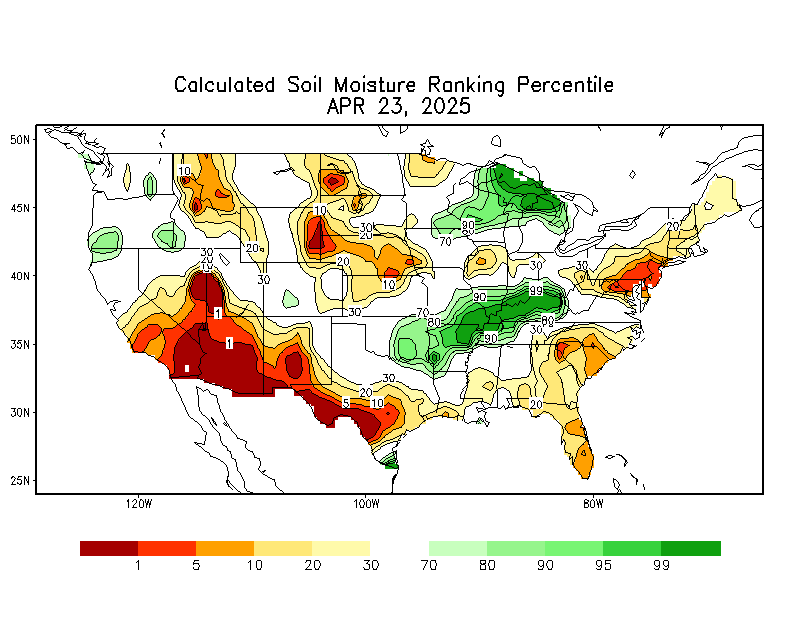
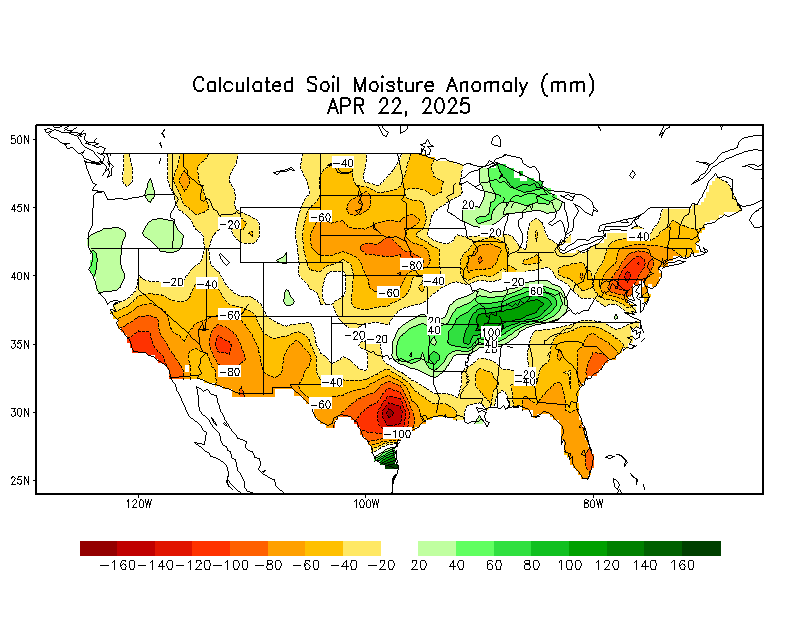
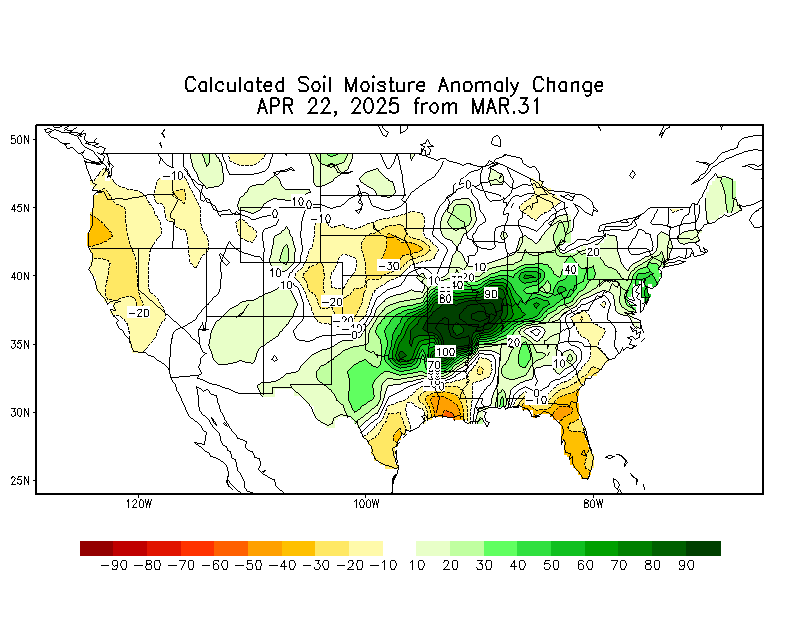
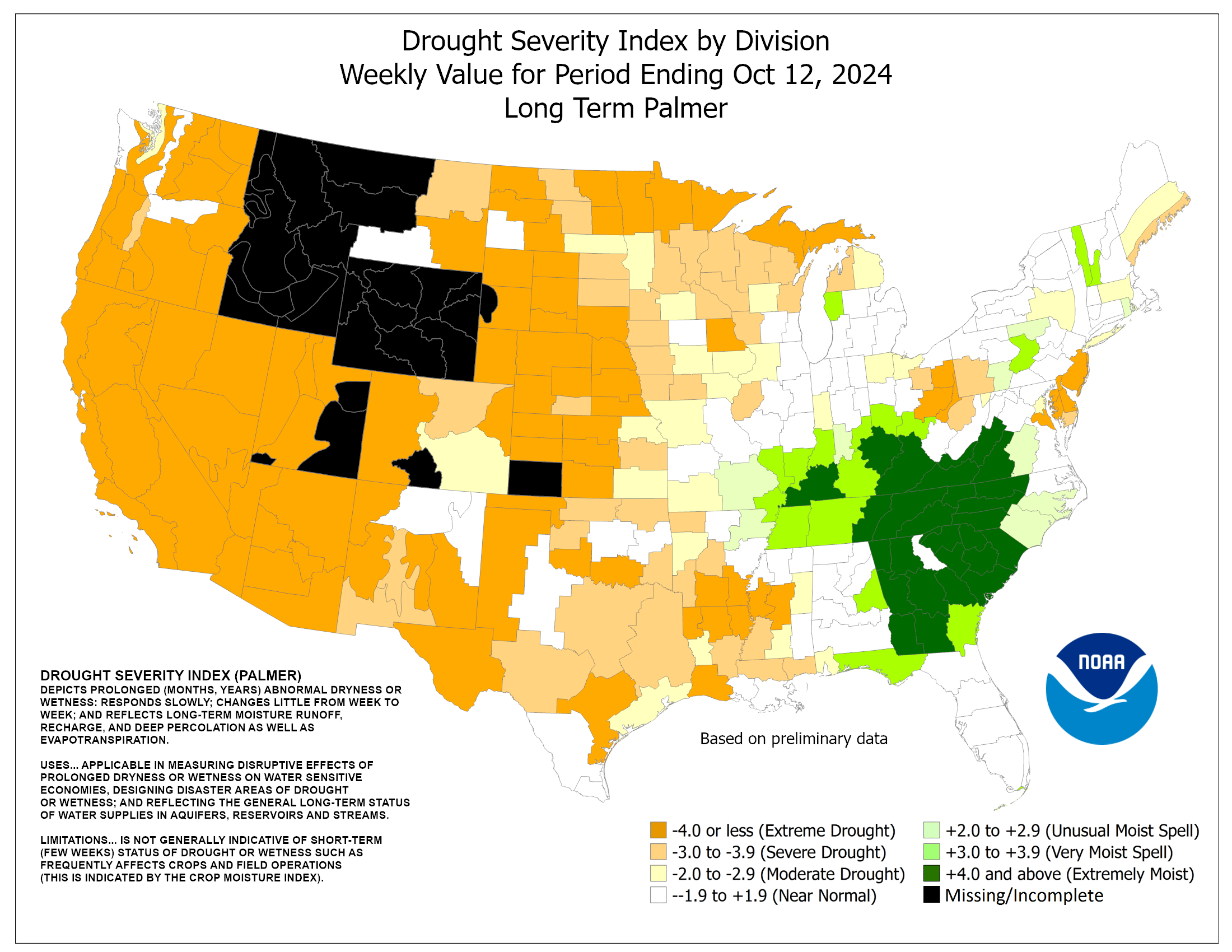
Drought Monitor maps:
Latest: The first map below is the latest. The 2nd one is from last week.
April 23: LOOKY_LOOKY! For the first time this year, its gotten dry enough for a few (small)areas in the Upper Midwest/Western Cornbelt to report slight drought.
April 30: Drought increased a bit......Plains and U.Midwest.
May: 7: Drought increased a bit from KS westward.
May 14: Drought increased a bit again, now, parts of Iowa have slight drought(this dry weather is why planting is ahead of schedule). Rains are coming to the dry spots in the forecast though.......bearish.
May 21: A bit more drought in ND.
May 28: Not much change
June 4: Drought increases a tad in the N.Plains and Upper Midwest.
June 10: Drought worsening in the S.Plains could be part of the La Nina signal!!
June 17: Drought got worse again in the S.Plains and yellows/slight drought emerged in new locations............all of Indiana.
June 24: Drought help in some places(KS) but increased a bit in others(ND).
July 1: Drought shrunk in Ohio Valley(I got 5.5 inches of rain in sw INdiana!) but not much change elsewhere. Surprised it didn't shrink more in IN/IL where some places(Bowyer) got great rains recently.
July 8: The main change was an increase over w.IA and e.NE. At the end of July with the hot/dry weather coming up, the S.Plains drought should expand into the S.Midwest to the Eastern Cornbelt.
July 15: Drought increased again over IA/MO/IN/OH. In july, evaporation usually exceeds rainfall, so some of this is seasonal. Hot temps coming up will accelerate evaporation.
July 22: Some Recent rains in IN did not make the cutoff.
July 29: Main dry spots are W.Iowa and IN/OH. Upcoming rains prospects good for ECB.
August 6: Drought got much worse in Iowa.
August 13: Looks like rains on Monday made no difference to W.IA drought(only around 1 inch).
August 20: IA is very dry.........into N.IL now.
August 27: Drought got worse in IA!!
September 3: Drought worse in IA and IL, N.IN!
September 10: We should probably be noting the real drought out West. The Rockies back to OR is the most severe.
October 1: La Nina driven severe drought out West, some of which has pushed into the Plains and even parts of the Midwest in recent months.
Oct. 7: Drought intensifies..............which is not unusual since this is the driest time of year seasonally.
November 5: Drought improves in the S.Plains!
November 12: Not much change. Hard to increase drought at this time of year with the cooler temperatures.
November 19: Drought worsens a bit out West!
November 26: Drought worsens more out West!
December 3: Drought worsens more out West! It's the La Nina!
https://droughtmonitor.unl.edu/


The top map is the Canadian ensemble average, the maps below are the individual members that make up the average at the end of week 2.
+++++++++++++++++++++++++++++++++++++++++
Each member is like the parent, Canadian model operational model.......with a slight tweek/variation in parameters. Since we know the equations to represent the physics of the atmosphere in the models are not perfect, its useful to vary some of the equations that are uncertain(can make a difference) to see if it effects the outcome and how.
The average of all these variations(ensembles) often yields a better tool for forecasting. It's always more consistent. The individual operational model, like each individual ensemble member can vary greatly from run to run.........and represent an extreme end of the spectrum at times. The ensemble average of all the members, because it averages the extremes.............from opposite ends of the spectrum.........changes much less from run to run.
End of week 2....................0z Canadian ensembles:
November 24: The mean below looks pretty zonal and benign but thats because it averages out alot of high amplitude solutions that cancel out the extremes with the majority NOT looking like the average/mean below. That means high uncertainty. Several individual solutions are very cold in the Midwest/East. Others are pretty mild. With the AO and NAO dropping in week 2, I am in the colder camp for now. The European Ensemble strongly favors this too.
November 25/26: Same as previous discussion. Massive disparities on location of upper level low in Canada, location of all the large scale features and position of the jet stream. The ensemble average does show a modest ridge/west-trough/east couplet which would mean chilly air east but some solutions are VERY amplified with the average of all solutions dampening that out.
November 30: Deep upper level low, somewhere in Canada. Temps will be frigid close to it. The farther south it is, with troughing underneath, the colder it is in the US. The farther north that it is, the more zonal the flow is in the US beneath it which would cut off the cold. Huge disparity in solutions. Upper level ridging in the Southwest looks La Nina-ish with dry/warm there.
December 3: The Deep upper level low in Canada IS the Polar Vortex. The position, in Central to Northern Canada with mostly zonal flow underneath it, keeps the frigid air locked up in Canada. Cross polar flow into Canada fills it with bitter cold in week 2 but most of it stays to our north with these solutions. The pattern needs to amplify, with more ridging in the West to force any major cold southward, downstream into the US.
372h GZ 500 forecast valid on Dec 19, 2020 00 UTC
Forecasts for the control (GEM 0) and the 20 ensemble members (global model not available)
Individual GFS ensemble solutions for the latest 12z run at 360 hours:
http://mp1.met.psu.edu/~fxg1/ENSHGT_0z/f384.gif
November 26: Position of upper level low in Canada varies a great deal. It's the location of this feature that will determine how deeply the REAL cold is able to penetrate in the East. Some solutions have this feature in N.Canada and cut off the major cold far to the north..............and are very mild with zonal flow. Others are VERY cold with a deep upper level low close to the US border. A dropping AO/NAO favors the colder solutions but the AO/NAO are also products of the same models and can be wrong too.
November 30: Potential ridge west, trough east/downstream couplet. Too many variations to have any confidence in any solution but this is leaning a bit to cooler conditions.
December 3: Polar Vortex/Upper Level Low in Canada is all over the place on this model. The majority of solutions keep it or pieces of it too far north to threaten the US with the frigid air that will be in place across much of Canada in week 2 because of cross polar flow(on several solutions). Not complete agreement though and enough variation to create high uncertainty but overall, right now this is a mild solution for much of the US in mid December.
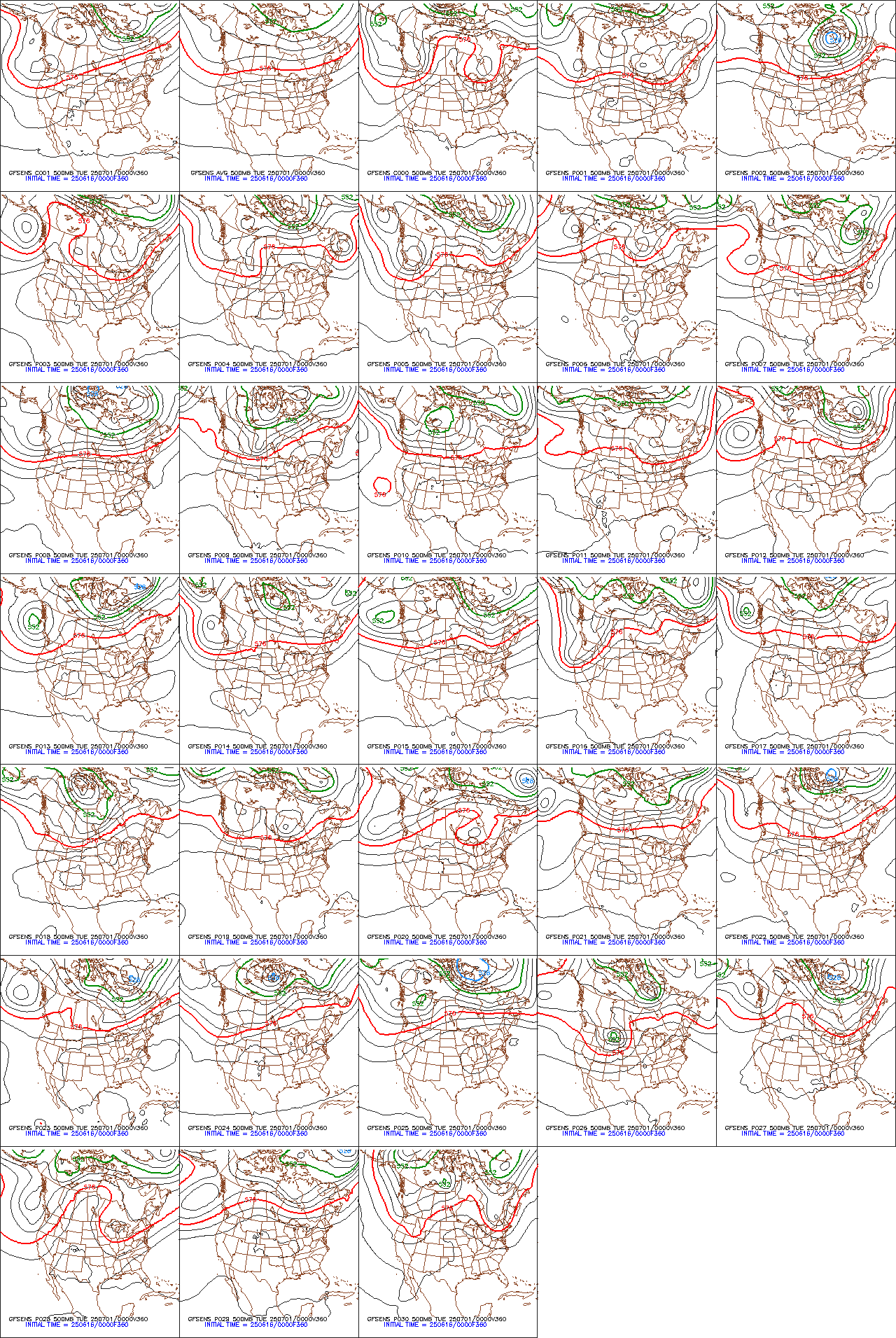
GFS Ensemble mean(average of all the individual solutions above). The first map is a mid/upper level map. The 2nd one is a temperatures map at around 1 mile above the surface. These are anomalies(difference compared to average).
NCEP Ensemble t = 360 hour forecast
December 3: Transient pattern? Positive anomaly in the Plains/Midwest means mild temps at 168 hours. At 360 hours, we see a great deal of changing. Negative anomaly in West/Central Canada and potential cross polar flow brings high confidence of frigid weather in Canada. Modest positive anomalies south of that in the US and mostly zonal flow suggests very mild temps in the US. With bitter cold in Canada within striking distance and amplification or buckling of the flow from zonal, west to east to more meridional, north to south would cause the currently mild mid December outlook to shift markedly colder.
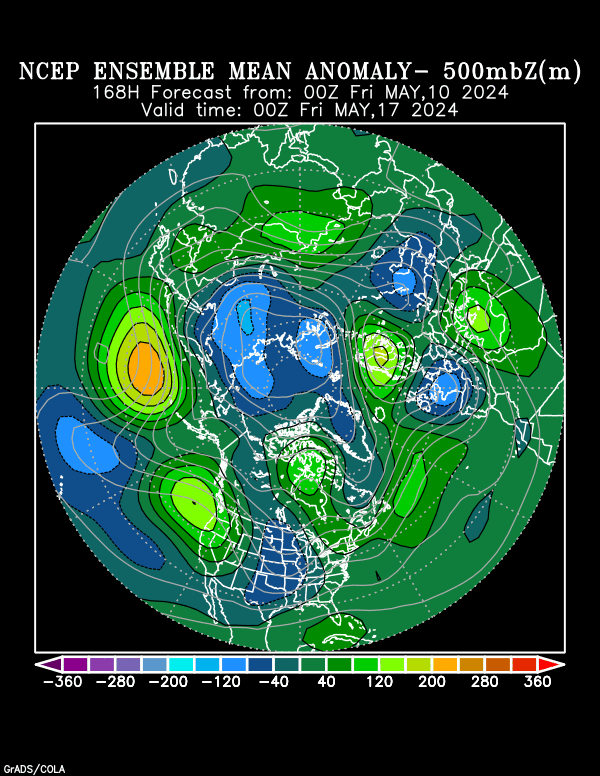
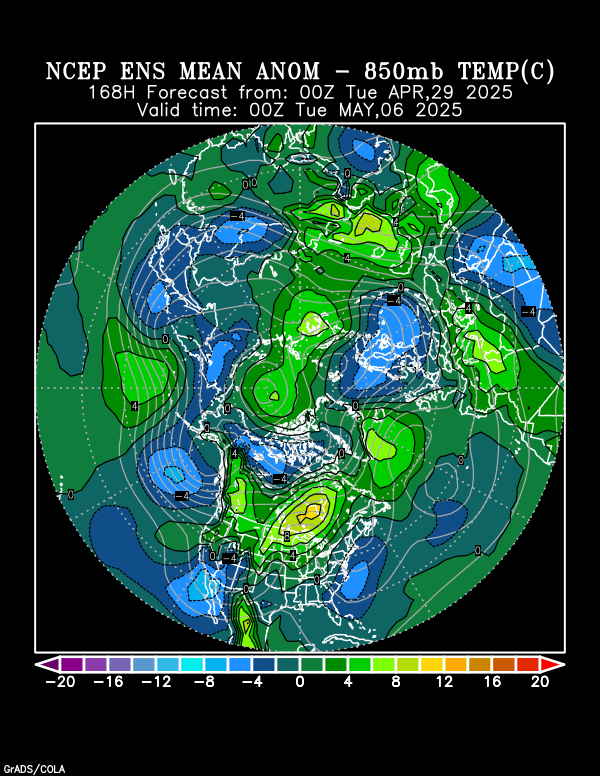
2 weeks out below
++++++++++
Latest, updated graph/forecast for AO and NAO and PNA here, including an explanation of how to interpret them...............mainly where they stand at the end of 2 weeks
https://www.marketforum.com/forum/t
Previous analysis, with the latest day at the bottom for late week 2 period.
Discussions, starting with the oldest below.
November 26: Some pretty extreme values recently. +++AO and ++NAO. This has been a factor in the mild weather recently. Both plunge to -AO/-NAO at the end of 2 weeks. Which is usually a COLD pattern and potentially very cold if it amplifies. A -AO/-NAO is favorable for transporting air from high latitudes to mid latitudes. Impressive ++PNA drops to +PNA. This is a HUGE factor with the upcoming cold being able to penetrate deeply south.
November 30: AO/NAO plunge from the recent strong positives to negative which favors a pattern change to colder but at the end of the period the spread is pretty wide and gives us great uncertainty. The solidly positive PNA drops close to 0 by the end of 2 weeks.
December 3: Recent +AO/+NAO that caused a mild November will drop negative but unlike the forecast from several days ago, it bounces back to zero, instead of staying negative, which will reduce chances for the frigid air in Canada to be flushed from high latitudes to the mid latitudes in mid December. The recently impressive ++PNA will drop to zero and also result in less push of cold air into the southlands.
National Weather Service 6-10 day, 8-14 day outlooks.
Updated daily just after 2pm Central.
Temperature Probability
| the 8-14 day outlooks ArchivesAnalogsLines-Only FormatGIS Data | |
Temperature Probability | |
 | |
The week 3 and week 4 CFS model really warmed up yesterday across the entire country.........near record warmth?
Bone chilling cold in Canada from cross polar flow in week 3 though. If the polar vortex associated with this cold shifts south or the AO/NAO drop more negative, then this cold will have an opportunity to plunge into the US......but not under the currently predicted scenario.
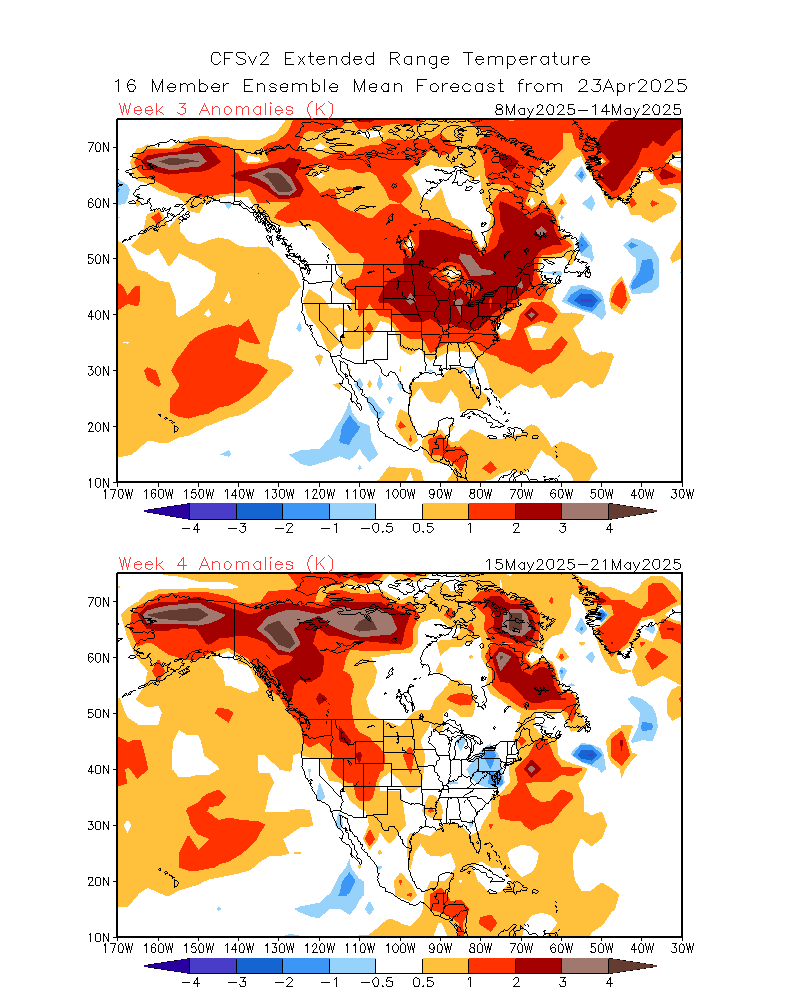
December 4 update: AO/NAO are dropping lower today, staying below 0 and reintroducing more risk of the frigid air in Canada getting transported south(that was taken out on Thursday when the AO/NAO shifted higher), although most 2 week solutions are not showing that.............yet. Great uncertainty!
December 5 update:
AO and NAO dropped a bit more but the spread and disparity in model solutions is massive
and the difference that it will make to temperatures later in December is stratospheric.
Canadian model is potentially very cold(with its cold bias). European model is shifting in that direction. The GFS disagrees strongly and is very mild.
I'll update the products above this weekend.
December 6 update: Most models keep the frigid air locked up in Canada, which means very mild in the US. AO/NAO has an extremely wide range in solutions. As long as some hang on to the solidly negative AO/NAO(minority) there is still a chance(waning) that it could turn sharply colder. The Canadian model has turned milder, towards the the very mild GFS.
Jan NG heading to $2
And the way ng trades, it might get there this week (-:
December 7: There won't be much cold with anomalies like this:
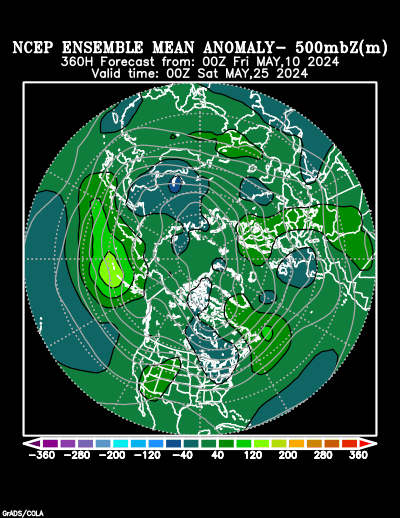
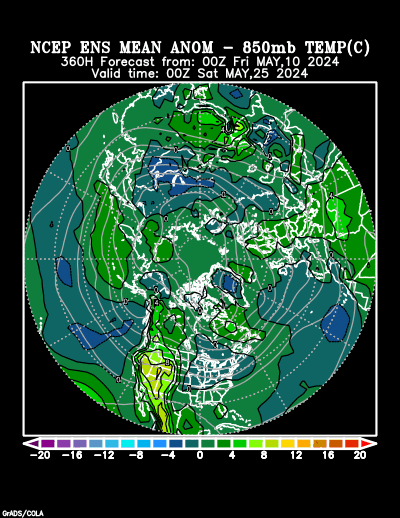
metmike: Models, especially the GFS products look very mild in week 2 with the frigid air locked up in Canada(high confidence that Canada will fill up with frigid air later this month).
HOWEVER, as long as the AO and NAO are predicted to be negative in week 2, there is a legit threat that the models are underestimating the amount of cold headed towards the US. Superimposing a -AO/-NAO on to model solutions in week 2 make them colder and increase chances of them turning colder.
Tuesday 12z update: The cold biased Canadian model has turned sharply colder because of several solutions that shift the polar vortex a couple thousand miles farther east than the other ones and where the GFS ensembles has it. This actually is possible in a -NAO/-AO regime, so I won't rule it out.
European Ensembles also came in colder early Tue afternoon.
December 9: The AO/NAO really drop today. This is significant enough to have more confidence that the models are not cold enough yet. Typically, what we see in a solidly -AO/-NAO pattern is that models continue to get colder and colder(more HDD's) with each update as they get a better handle of the pattern which is predicted by the -AO-NAO. This is exactly whats happened the last couple of days.